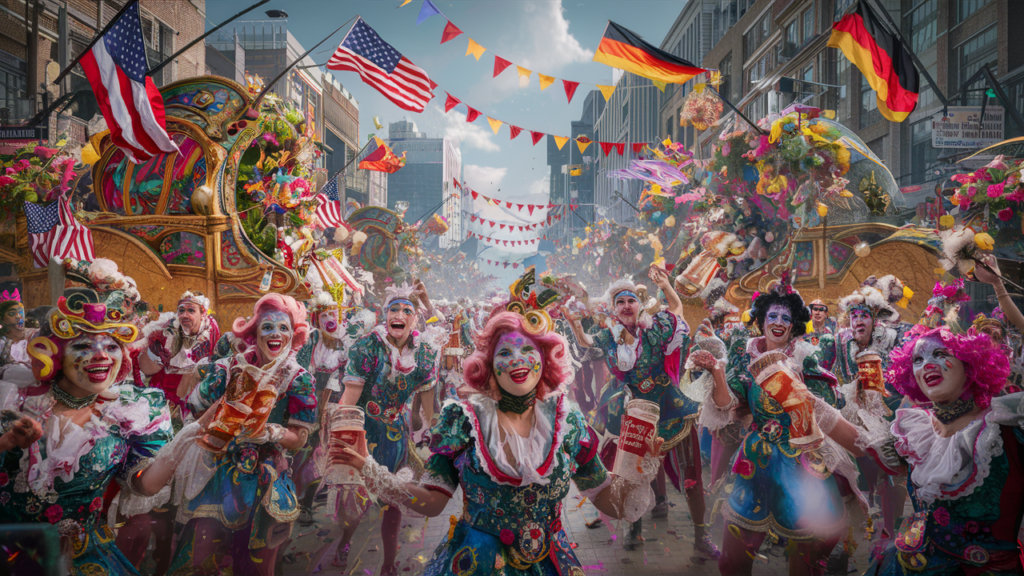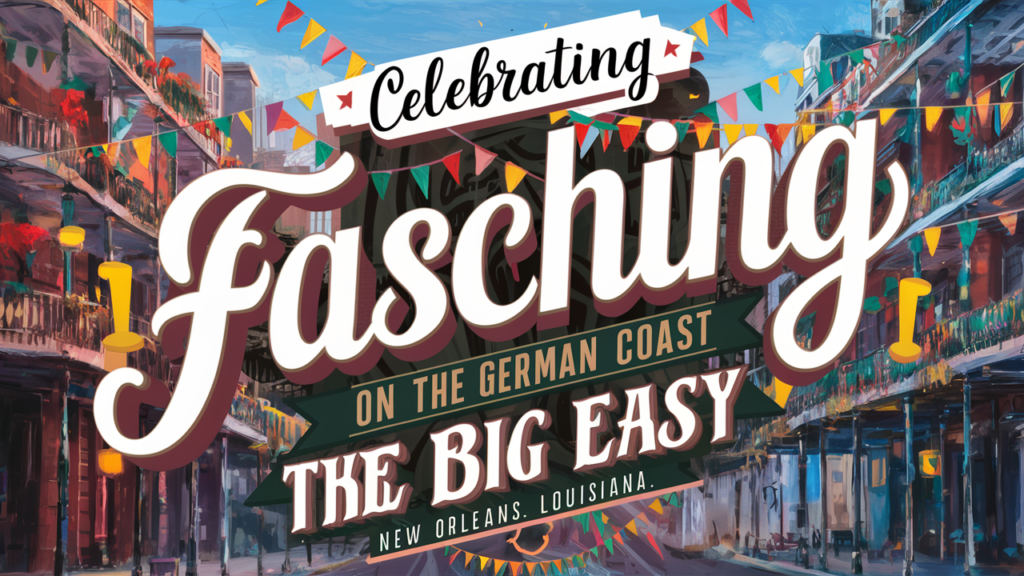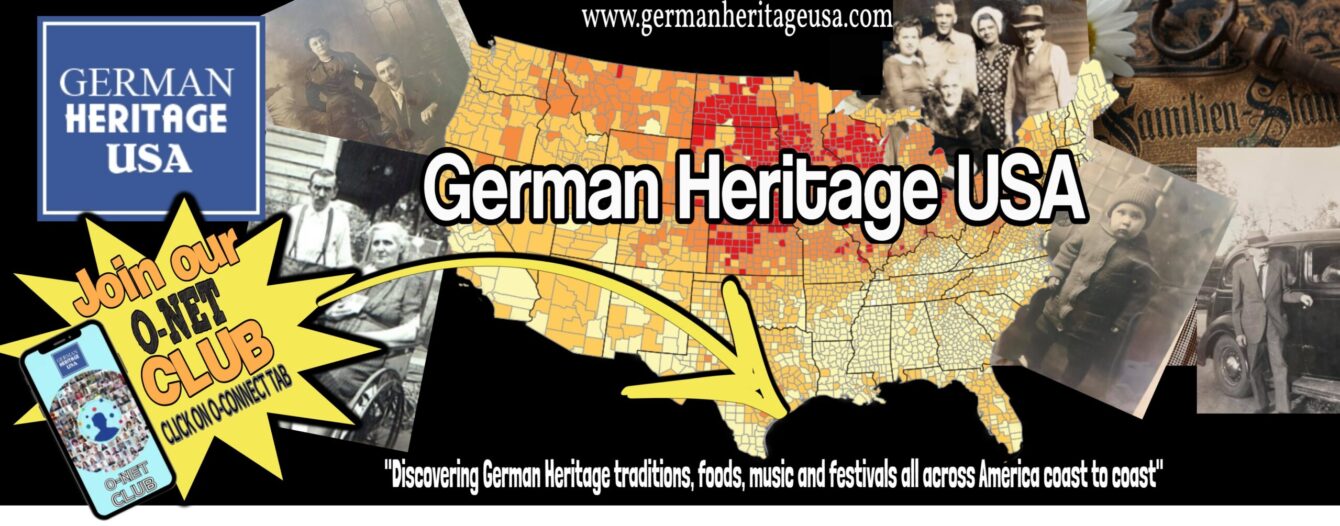The Many Faces of the German Carnival Season
Unleashing the Fun: A Guide to Germany’s Fascinating Fasching
Germany isn’t just about efficiency and bratwurst (although those are pretty awesome too).
Come February, the country transforms into a kaleidoscope of color, music, and merrymaking,
all thanks to the vibrant carnival season known as Fasching, Fastnacht, or Karneval. But wait, aren’t these three different things? Well, not quite.

Understanding the Names: A Carnival of Confusion Cleared Up
Fasching, Fastnacht, and Karneval all refer to the same thing: Germany’s epic pre-Lenten celebration. The terms are used interchangeably depending on the region. Fasching is more common in southern Germany, while Fastnacht reigns supreme in the west, and Karneval dominates the Rhineland. So, no matter which name you hear, you’re referring to the same fantastic festival.
When the Party Starts: Kicking Off the Carnival Countdown
Fasching/Fastnacht/Karneval isn’t a one-day bash; it’s a full-blown season of merriment. Technically, celebrations begin on November 11th at 11:11 am,
marked by the symbolic awakening of an elderly woman named ‘Frau Fasching’ in some regions. However, February is when things truly explode into a frenzy of fun.
The Grand Finale: Ash Wednesday and Beyond
Fasching/Fastnacht/Karneval doesn’t adhere to a fixed date in February. Instead, its conclusion hinges on a specific Christian holy day: Ash Wednesday.
This movable feast falls 46 days before Easter Sunday, meaning Fasching festivities can culminate anywhere between early and late February.
Celebrating in Style: The Hallmarks of a German Carnival
Now that you know the lingo and the loose timeframe, let’s delve into the heart of the celebrations. Expect a dazzling display of costumes – the more outrageous, the better! Think elaborate feathered headdresses, sparkling gowns, and quirky creature creations. Parades snake through the streets, pulsating with music and overflowing with infectious energy.

People dance in the streets, public squares transform into party zones, and laughter fills the air. And of course, no German celebration is complete without delicious food and drinks. Sample regional specialties, indulge in sweet treats, and raise a toast to the spirit of Fasching.
A Carnival for Everyone: Experiencing Fasching Beyond Germany
The magic of Fasching isn’t confined to German borders. Many cities with sizeable German-American populations host their own Fasching or Karneval celebrations in February. These events typically feature traditional food, music, and dancing, offering a fantastic opportunity to experience a slice of German culture without leaving the US.
So, if you’re looking for a unique way to shake off the winter blues, consider joining the revelry. Dust off your most creative costume, grab your dancing shoes, and get ready to immerse yourself in the joyous chaos that is Germany’s Fasching/Fastnacht/Karneval!
Fasching vs. Fastnacht vs. Karneval
While Fasching, Fastnacht, and Karneval all refer to the same celebration, there are some slight regional variations in traditions and celebrations. Here’s a quick breakdown:
Region |
Name |
Traditions |
| Southern Germany | Fasching | Focus on elaborate costumes and balls. |
| Western Germany | Fastnacht | More emphasis on street parades and feasting. |
| Rhineland | Karneval | Known for its satirical floats and commentary on political and social issues. |
Fasching Fever in the USA: Partying Like a German across the Pond
The spirit of Fasching isn’t just for Germany. Many American cities with strong German heritage come alive in February with their own Fasching or Karneval celebrations. Here are a few highlights:

- New Orleans, Louisiana: Once known as the “German Coast”, the Big Easy knows how to throw a party, and Fasching is no exception. Head to the historic French Quarter for Rex, King of Carnival, a flamboyant parade known for its throw beads and elaborate costumes.
- Cincinnati, Ohio: Nicknamed “Fahrneytown” (Pigtown) by German immigrants in the 19th century, Cincinnati boasts a rich German heritage. Their Fasching celebration, held in February, is one of the largest in the US, featuring lively music, traditional food like bratwurst and potato pancakes, and of course, plenty of beer.
- New Braunfels, Texas: Founded by German immigrants in 1845, New Braunfels holds a legendary Wurstfest every year in mid-November. While not exactly a Fasching celebration, it captures the spirit of German merrymaking with ten days of live music, polka dancing, and, as the name suggests, an endless variety of delicious sausages.
- Milwaukee, Wisconsin: Home to a large German-American population, Milwaukee throws a fantastic Karneval bash in February. Expect vibrant parades, energetic dance performances, and a chance to sample Milwaukee’s famous beers.
- Sausalito, California: This charming San Francisco Bay Area town holds a unique Fasching celebration that blends German traditions with a Californian twist. Think lively music, delicious food trucks, and a stunning backdrop of the Golden Gate Bridge.
These are just a few examples, and there are many other places across the US that hold Fasching or Karneval celebrations in February. Do some research to see if there’s a celebration happening near you!
Beyond the Parties: Exploring German Culture
While the parties are a blast, Fasching celebrations also offer a chance to delve deeper into German culture. Many events feature traditional music and dance performances, giving you a glimpse into German artistic heritage.
Additionally, you might find booths selling German crafts and souvenirs, making for a perfect opportunity to take home a piece of the Fasching spirit.
So, this February, why not ditch the ordinary and embrace the extraordinary? Join a Fasching celebration, don a wacky costume, and let loose with the infectious joy that defines this vibrant German tradition!
